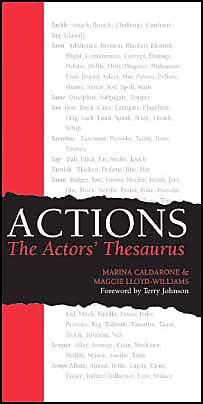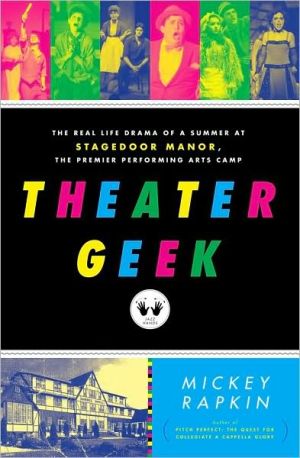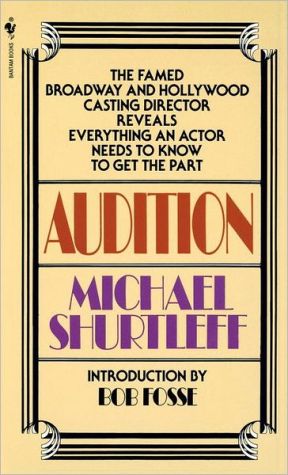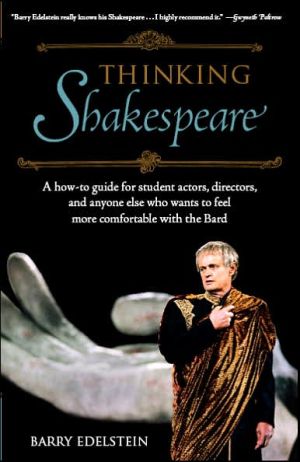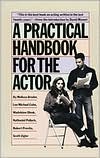The Actor in You: Sixteen Simple Steps to Understanding the Art of Acting
Search in google:
The Actor in You enhances the reader’s appreciation of the art of acting by helping them realize that they already possess, in principle, the ability to play a role, to fulfill the sense of drama and to structure dramatic scenes, and the capacity to express emotion. Without losing its simplicity, directness, and enjoyable writing style, this revised and enlarged edition contains more material on the history of the modern actor, greater emphasis on script analysis, and revisions suggested by teachers who have used it successfully in the classroom. Drawing exercises and examples from readers’ everyday lives and from well-known films and television programs, Benedetti succeeds in deducing dramatic principles from those experiences and then applying them to the creation of stage role. Booknews An introduction to the fundamentals of acting for beginning students. The 16 steps are arranged in three parts--examples from everyday life to explain the basic principles of acting, exercises to prepare for creative group work, and a step-by-step approach to creating a role. Annotation c. by Book News, Inc., Portland, Or.
P A R T O N E The Actor’s Art1. Understanding the Actor’s Job and TraditionThe Tradition of the ActorGetting into the TraditionSummary of Step 12. Discovering ActionStanislavski’s View of ActionMaking Action StageworthyUsing Action In a SceneSummary of Step 23. Experiencing Internal and External ActionInteractionsSummary of Step 34. Understanding Emotion and CharacterCharacter and the Magic IfThe Actor in YouSummary of Step 4Summary of Part OneP A R T T W O Preparing Yourself to Act5. Relaxing and CenteringRelaxationFinding CenterSummary of Step 56. Breathing, Sounding, and Moving from CenterThe Cycle of EnergyYour Relationship to GravityPhrasing MovementSummary of Step 67. CollaborationSeeing and HearingPursuing an ObjectiveSummary of Step 78. Entering the Actor’s State of MindPublic SolitudeDual ConsciousnessIndicatingDisciplineSummary of Step 8Summary of Part TwoP A R T T H R E E Preparing to Rehearse: Analyzing the ScriptSelecting Your SceneExample Scenes9. Understanding Your LinesWord ChoiceRhythmMelodySummary of Step 910. Understanding Play and Scene StructureFinding the CrisisUnits of ActionFinding the Function and Crisis of the SceneSummary of Step 1011. Experiencing the Character’s Function and Given CircumstancesFunction and Recognition TraitsThe Given CircumstancesWhoWhereWhenSummary of Step 11Summary of Part ThreeP A R T F O U R RehearsalGetting and Giving Notes12. PersonalizingEmotional Recall and SubstitutionSummary of Step 1213. Exploring Inner ActionThe StimulusAutomatic and Spontaneous ActionsStrategic ChoiceThe Inner MonologueSummary of Step 1314. Defining Objectives and ActionDefining Useful ObjectivesPlayable Strategic ActionsDirect and Indirect Action: SubtextNot DoingObstacles and Counter-ActionsSummary of Step 1415 Finding the Scenario, Score, Through-Line, and SuperobjectiveThe ScoreThrough-Line and SuperobjectivePersonalizing the SuperobjectiveSummary of Step 1516 Preparing for PerformanceThe StageMoving on StageBlockingShaping and PacingSpontaneityEmotion in PerformanceEvaluating Your WorkSummary of Step 16Summary of Part FourAfterwordYour Sense of PurposeAppendix AA Sample Television SceneAppendix BSuggested Plays and AnthologiesPlaysPlay and Scene AnthologiesAnthologies for Students of ColorGlossary of Theater and Film TerminologyIndex


